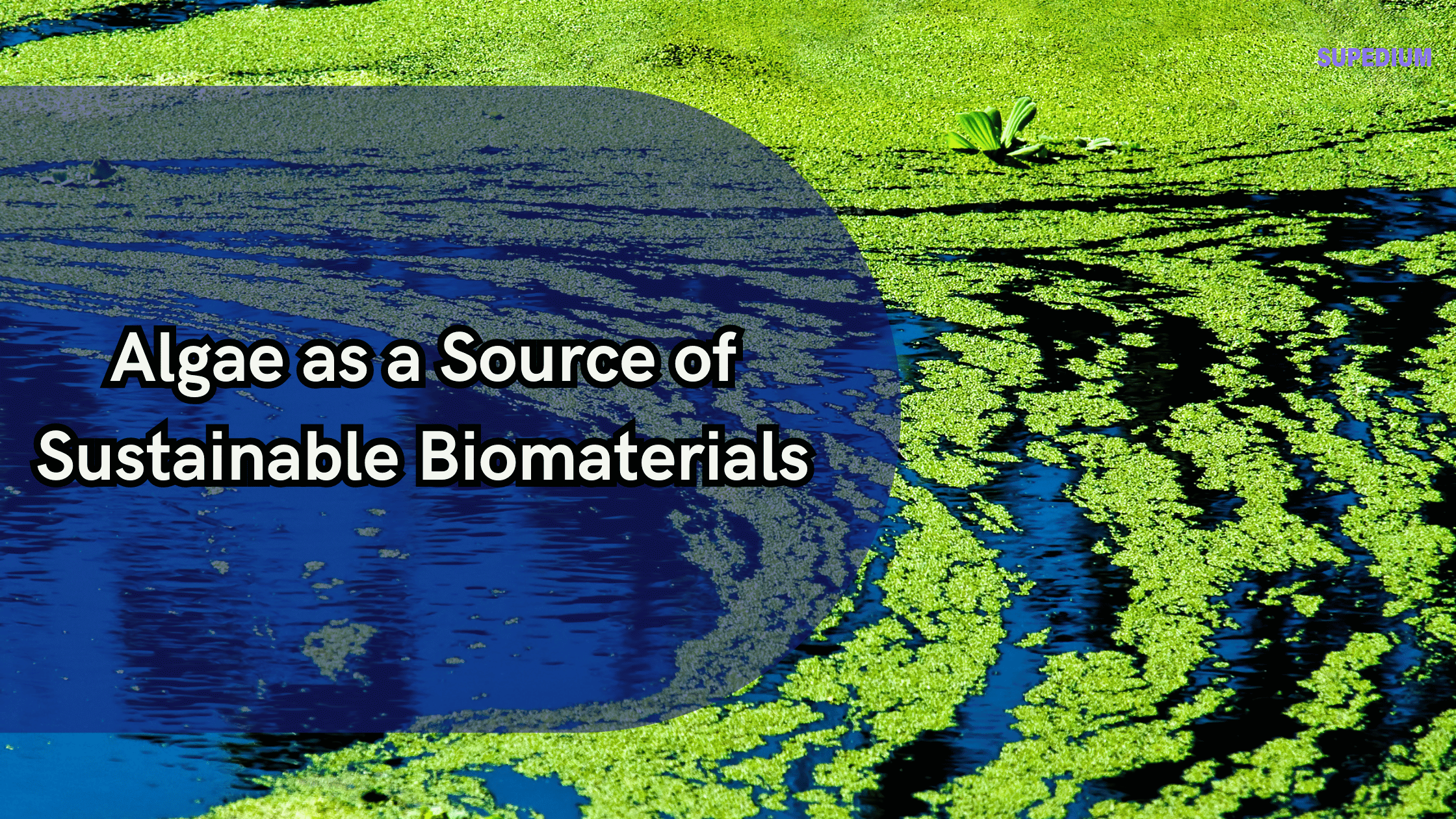Table of Contents
![]()
In the quest for sustainable materials that reduce environmental impact and support a circular economy, algae have emerged as a promising resource. This article explores the potential of algae as a source of sustainable biomaterials, including their cultivation, types of products, benefits, challenges, and future prospects.
Introduction
Definition and Importance of Biomaterials
Biomaterials are substances that are designed to interact with biological systems for medical or industrial purposes. They play a crucial role in various applications, from medical implants and drug delivery systems to packaging and construction materials. With increasing concerns about environmental sustainability, there is a growing demand for biomaterials that are renewable, biodegradable, and have minimal ecological impact.
Introduction to Algae
Algae are a diverse group of photosynthetic organisms found in various aquatic environments. They can be broadly classified into microalgae (single-celled organisms) and macroalgae (seaweeds). Algae are vital to ecosystems as primary producers and have shown great potential as a sustainable resource for biomaterials due to their rapid growth and minimal resource requirements.
Algae as a Sustainable Resource
Growth and Cultivation
Algae can be cultivated in several ways, making them a flexible and sustainable resource. The two primary methods for algae cultivation are open pond systems and closed photobioreactors. Open ponds are large, shallow bodies of water where algae grow naturally and are relatively inexpensive to operate. However, they are more susceptible to contamination and environmental variability. Closed photobioreactors are controlled environments that allow for optimized growth conditions but are more costly.
Algae cultivation offers several environmental benefits. They require minimal land and water compared to terrestrial crops and can be grown in various conditions, including waste water and saline environments. Moreover, algae can sequester carbon dioxide (CO2) from the atmosphere, making them a valuable tool in combating climate change.
Types of Biomaterials Derived from Algae
Algal Polymers
Algae produce several types of polymers with various applications:
- Agar: Extracted from red algae, agar is a gel-like substance used in laboratory cultures, food products, and pharmaceuticals. Its ability to form gels and its high gel strength make it a valuable material for scientific and industrial use.
- Alginate: Derived from brown algae, alginate is used as a thickening agent and gelling agent in foods, pharmaceuticals, and wound dressings. Its versatility and ability to form gels in the presence of calcium ions are highly valued.
- Carrageenan: Extracted from red algae, carrageenan is used as a thickener and stabilizer in various food products. It is commonly found in dairy products, sauces, and cosmetics.
Algal Biofuels
Algae are also a significant source of biofuels. The types of biofuels derived from algae include biodiesel and bioethanol. Biodiesel is produced through transesterification, a chemical process that converts algal oils into fatty acid methyl esters (biodiesel) and glycerin. Bioethanol is produced by fermenting algal carbohydrates. Algal biofuels offer several advantages, including high energy yield, reduced greenhouse gas emissions, and lower dependence on fossil fuels. However, challenges such as high production costs and scalability issues remain.
Algal-Based Composites and Nanomaterials
Algae are being explored for their potential in biodegradable plastics and nanomaterials:
- Biodegradable Plastics: Algal polysaccharides can be used to produce plastics that decompose more quickly than conventional plastics. These materials are valuable for reducing plastic waste and environmental pollution.
- Algal Nanocellulose: Algae can be used to produce nanocellulose, a material with applications in packaging, construction, and electronics. Nanocellulose is lightweight, strong, and biodegradable.
Benefits of Algae-Based Biomaterials
Environmental Impact
Algae-based biomaterials offer significant environmental benefits. They reduce greenhouse gas emissions by sequestering CO2 and decrease reliance on fossil fuels. Additionally, algae can be grown with minimal land use and water consumption, and many of their products are biodegradable or recyclable, contributing to waste reduction.
Economic Aspects
The algae industry has the potential to create jobs in algae farming, processing, and product development. Market growth in algae-based products presents investment opportunities and can drive economic development in sectors related to sustainability and green technology.
Health and Safety
Algae-based biomaterials are generally biocompatible and non-toxic, making them suitable for medical and food applications. Their use in products such as wound dressings and food additives can offer health benefits and reduce the risk of adverse reactions compared to synthetic alternatives.
Challenges and Limitations
Technological and Economic Challenges
Despite their potential, algae-based biomaterials face several challenges. The high costs associated with algae cultivation, processing, and extraction hinder large-scale adoption. Additionally, scalability remains a concern, as current technologies may not yet be capable of meeting global demand efficiently.
Environmental and Social Considerations
The environmental impact of large-scale algae cultivation must be carefully managed to avoid disrupting local ecosystems. There are also socio-economic considerations, as the expansion of algae farming could impact coastal communities and traditional livelihoods.
Current Research and Developments
Innovations in Algae Cultivation and Processing
Research is ongoing to improve algae cultivation techniques and processing technologies. Advances in genetic engineering are enabling the development of algae strains with enhanced properties for specific applications. Innovations in cultivation systems, such as more efficient photobioreactors and integrated cultivation systems, are also being explored.
Case Studies
Several companies and research institutions are leading the way in algae-based biomaterials. For example, companies like Algenol and Solazyme are developing algae-based biofuels and bioplastics, while academic institutions are researching novel algal polymers and composites.
Future Prospects
Emerging Trends in Algae-Based Biomaterials
The future of algae-based biomaterials looks promising with trends toward integrating algae technologies with other sustainable practices. Potential new applications include advanced packaging materials, eco-friendly construction products, and high-performance electronics.
Policy and Regulatory Considerations
Supportive policies and funding opportunities are crucial for advancing algae-based technologies. Regulatory frameworks must be developed to ensure the safe and sustainable use of algae-derived products while encouraging innovation and investment in the sector.
Conclusion
Algae represent a valuable and versatile resource for sustainable biomaterials. Their ability to provide a range of products with minimal environmental impact highlights their potential in supporting a more sustainable future. Continued research, technological advancements, and supportive policies will be essential in overcoming existing challenges and realizing the full potential of algae-based biomaterials.
Share This





Be the first to comment